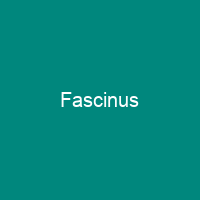Fascinus: The Divine Phallus and Its Mystical Powers

Imagine a world where the phallus was not just a symbol of male virility but also a powerful talisman against evil. In ancient Rome, this concept was embodied by the fascinus – a divine phallic figure that protected people from envy and malice.
The Fascinating Origins
Did you know that the word ‘fascinate’ comes from Latin fascinum, meaning ‘to use the power of the fascinus’? It’s like a magical spell, but instead of casting it on someone, it protects them. The cult of the fascinus was closely tied to the Vestal Virgins and was believed to ward off evil, especially in children and victorious generals.
Phallic Charms: Ubiquitous in Roman Culture
Phallic charms were everywhere in ancient Rome – from jewelry and lamps to wind chimes. These symbols weren’t just decorative; they were believed to possess virile and regenerative powers, warding off evil with their very presence. The phallus was seen as a powerful tool against the ‘evil eye,’ a concept that still resonates today.
The Phallus vs. the Evil Eye
One of the most intriguing symbols in Roman culture is the motif of a phallus ejaculating towards an evil eye. This imagery represented the victory of the phallus over the power of envy and malice. It’s like the phallus was the superhero, fighting off the villainous eye with its powerful virility.
The Fist and Phallus Amulet: A Soldier’s Charm
For soldiers, a popular amulet was the ‘fist and phallus’ design. This featured a phallic pendant with a clenched fist facing away from the glans. It’s like the soldier had his own little shield against the evil eye, always ready to protect him in battle.
Divinized Phallic Gods
The fascinus shared attributes with other divinized phallic gods such as Mutunus Tutunus and Priapus. These deities were not just worshipped for their virility but also for their protective powers. The cult of the fascinus was an important part of Roman public religion, particularly in relation to the safety of the state.
Additional Apotropaic Devices
Some examples of the fist-and-phallus amulets incorporated vulvar imagery as well as extra apotropaic devices. This shows that ancient Romans believed in layering protection, much like adding multiple locks to a safe. The more layers, the better the protection.
In conclusion, the fascinus was not just a symbol of male virility but also a powerful talisman against evil. Its protective powers were deeply ingrained in Roman culture and continue to intrigue us today. Whether you believe in its magic or see it as an interesting piece of history, there’s no denying that the fascinus has left an indelible mark on our understanding of ancient Roman religion and magic.
You want to know more about Fascinus?
This page is based on the article Fascinus published in Wikipedia (retrieved on November 25, 2024) and was automatically summarized using artificial intelligence.







